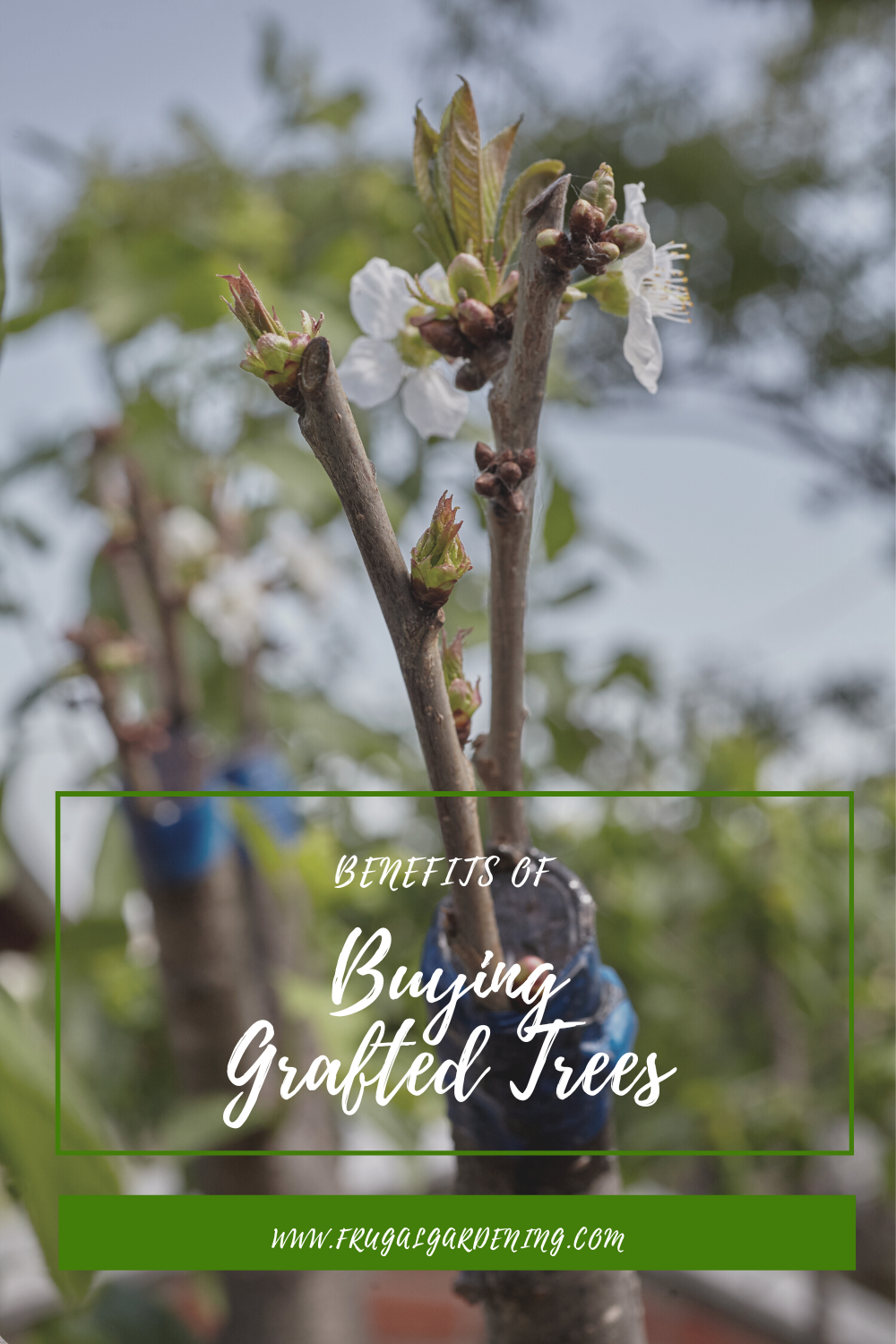
What are Grafted Trees?
Grafted fruit trees are simply 2 trees fitted to grow as one.
The rootstock is the root of a tree that is cut to let a second tree be fitted into it so it can bind the inner tissues together, heal, and continue to grow.
The second tree, called the scion, is usually cut from a young growth on an established tree. This is the part that will produce fruit. And since it has been taken from a known tree, we can be sure the fruit will taste the same.
Benefits of Buying Grafted Fruit Trees
Taste
Fruit trees are not true to seed.
This means that if you grow an apple tree from seed, its fruit may not taste like the variety of apples you took the seed from. Simply put, there is no guarantee a Honeycrisp apple seed will grow into a tree that produces Honeycrisp apples.
Hardiness
Because you can mix and match the rootstock and the scion, you can get trees that are very well adapted to your exact conditions, giving them a chance to thrive without much help.
Resistance
Grafted fruit trees often have better resistance to disease and insect activity.
Can You Graft Trees Yourself?
Yes. Grafting trees is not difficult and requires a few supplies.
How to Graft
With just a little knowledge, you can graft trees by yourself and end up with a tree that produces multiple types of fruit, like the Tree of 40 Fruits.
Pick the Right Trees
You have to start by picking compatible rootstock and scion. This means that they have to be closely related.
Gather Supplies
You will need a sanitized sharp knife, tape, and grafting wax.
Cut Your Trees
There are several methods for cutting, like Bark Grafting or Whip and Tongue.
They all boil down to using a clean, sharp knife to expose a broad portion of the green tissues underneath the bark. Next, you need to make sure they fit tightly together.
And it is essential to be as precise as you can. Sharp cuts and a tight fit will help the tree heal quickly from this stressful event.
Bind and Seal Your Trees
Use the tape to bind the two pieces together and the wax to seal the wound to help keep out bacteria and fungi that will cause infections or worse.
When to Graft Fruit Trees?
The best time to graft fruit trees is during the late summer or early fall. This means the tree will have a short time to heal before going dormant for the winter.
Conclusion
Buying grafted fruit trees is the only way to be confident they will produce a specific fruit. So what trees do you want to plant?
Read More:
Benefits of Buying Grafted Trees
10 Techniques To Increase Germination Rate of Seeds
5 Plants That Easily Grow in Water

Ali is a homeschooling mom of 5 who includes gardening and food prep as important subjects in her school. She has been raising plants her whole life and learned how to garden from her father. When she isn’t caring for her plants, she can be found reading or hiking.
Leave a Reply